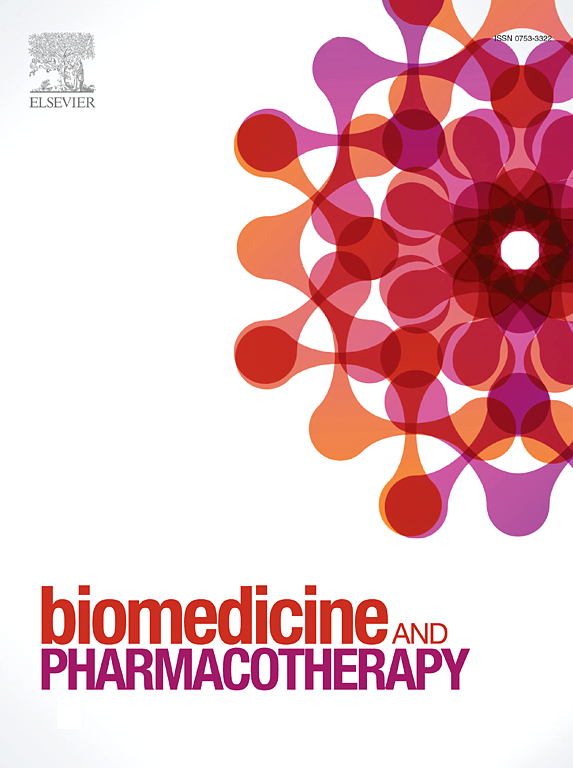针对三叉神经节的α6GABAA受体阳性变构调节剂预防和终止两性慢性眶周异常性疼痛和头性疼痛的机制和临床前比较研究
IF 7.5
2区 医学
Q1 MEDICINE, RESEARCH & EXPERIMENTAL
引用次数: 0
摘要
偏头痛仍然是一个未满足的医疗需求,即使有新的降钙素基因相关肽(CGRP)靶向治疗。含有α6亚基(Gabra6)的GABAA受体(α6GABAARs)在三叉神经节(TG)中大量存在。我们通过反复间歇性注射硝酸甘油(riNTG)(10 mg/kg, i.p,每2天,共5次)诱导的慢性偏头痛模型,评估可用药的α 6gabar选择性阳性变构调节剂(PAM) jk - i- 56 - 1的抗偏头痛疗效及其机制。通过降低其眶周区域的机械戒断阈值,以及通过提高其鬼脸评分来评估其慢性头痛,对两种性别的经rtng治疗的ICR小鼠的慢性和急性异动反应进行评估。NTG可引起长时间的慢性眶周异位性疼痛和头侧疼痛,一次注射NTG可引起急性异位性疼痛。每日DK-I-56-1预防慢性异位性疼痛和头痛症,并消除两性急性异位性疼痛。k - i- 56 - 1(10 mg/kg, i.p.)的抗异动和头痛缓解作用被托吡酯(30 mg/kg, i.p.)模拟,被α6GABAAR拮抗剂速尿(i.p. furosemide)拮抗,在gabra6基因缺失的ICR小鼠中无效。然而,孕酮(1 mg/kg, ig)只能部分预防头痛。在解离的TG神经元中,DK-I-56-1诱导了gaba诱导电流和去极化的速尿敏感增强。然而,DK-I-56-1并没有改变rintg处理小鼠TG中炎症细胞因子升高、谷氨酸脱羧酶65 kDa (GAD65)下调和Gabra6蛋白水平。因此,DK-I-56-1可能通过α6GABAARs增强gaba诱导的TG神经元去极化,从而具有预防和终止偏头痛的潜力,其疗效与托吡酯相当,但优于孕酮作为一种新的偏头痛治疗药物。本文章由计算机程序翻译,如有差异,请以英文原文为准。
α6GABAA receptor positive allosteric modulators targeting trigeminal ganglia for preventing and aborting chronic periorbital allodynia and cephalic pain in both sexes: A mechanistic and comparative preclinical study
Migraine remains an unmet medical need, even with new calcitonin gene-related peptide (CGRP)-targeting treatments. The α6 subunit (Gabra6)-containing GABAA receptors (α6GABAARs) are abundant in trigeminal ganglia (TG). We evaluated the possible anti-migraine efficacy and mechanism of DK-I-56–1, a druggable α6GABAAR-selective positive allosteric modulator (PAM), using a chronic migraine model induced by repeated intermittent nitroglycerin (riNTG) injections (10 mg/kg, i.p., every 2 days for a total of 5 doses). Chronic and acute allodynic responses of riNTG-treated ICR mice of both sexes were assessed by reduced mechanical withdrawal thresholds in their periorbital areas, and their chronic cephalic pain by elevated grimace scores. riNTG induced long-lasting chronic periorbital allodynia and cephalic pain, and one NTG injection caused acute allodynia. Daily DK-I-56–1 prevented chronic allodynia and cephalic pain, and abolished acute allodynia in both sexes. Anti-allodynic and cephalic pain-relieving effects of DK-I-56–1 (10 mg/kg, i.p.) were mimicked by topiramate (30 mg/kg, i.p.), antagonized by i.p. furosemide, an α6GABAAR antagonist, and nullified in Gabra6-knockout ICR mice. However, olcegepant (1 mg/kg, i.p.) only partially prevented cephalic pain. In dissociated TG neurons, DK-I-56–1 induced a furosemide-sensitive potentiation of GABA-induced current and depolarization. However, DK-I-56–1 did not altered increased inflammatory cytokines, down-regulated glutamate decarboxylase 65 kDa (GAD65), and Gabra6 protein levels in TG of riNTG-treated mice. Therefore, DK-I-56–1 may have the potential to prevent and abort migraines by potentiating GABA-induced depolarization in TG neurons via α6GABAARs, offering efficacy comparable to that of topiramate but superior to olcegepant as a novel migraine therapy.
求助全文
通过发布文献求助,成功后即可免费获取论文全文。
去求助
来源期刊
CiteScore
11.90
自引率
2.70%
发文量
1621
审稿时长
48 days
期刊介绍:
Biomedicine & Pharmacotherapy stands as a multidisciplinary journal, presenting a spectrum of original research reports, reviews, and communications in the realms of clinical and basic medicine, as well as pharmacology. The journal spans various fields, including Cancer, Nutriceutics, Neurodegenerative, Cardiac, and Infectious Diseases.

 求助内容:
求助内容: 应助结果提醒方式:
应助结果提醒方式:


